GUIDE TO ASH TREES IN TEXAS
Ash is a deciduous, dioecious tree in the genus Fraxinus, belonging to the Olive Family in the order Lamiales. Ash species are identified by their opposite branching, distinctive diamond patterned bark, and winged seeds called samaras produced by female trees:
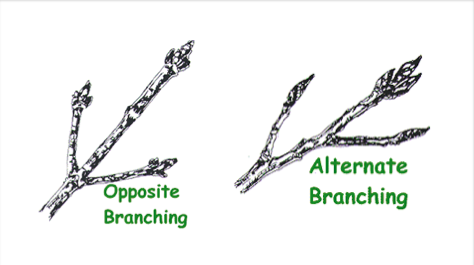
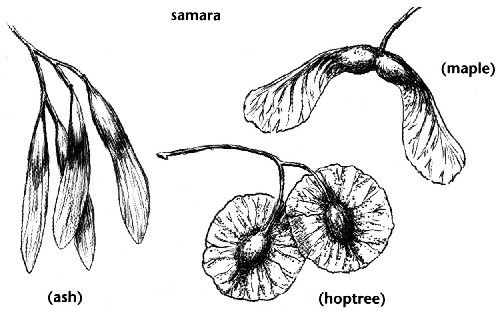



Click images to expand
WHITE ASH (Fraxinus americana) is native to the eastern part of the state and typically grows 50-80' tall (sometimes taller) and 40-50' wide. Leaves are 8 to 13 inches in length, 5-9 elongated leaflets, usually 7; 2 - 6 inches in length, 1 1/2 - 3 in. wide. The lateral leaflets with stalks are strongly whitened beneath. Leaflets are often entire or with very shallow teeth. Leaflets are attached by longer petioles than Green Ash, and the base of each leaflet is well-defined, which also helps to distinguish it from Green Ash. The bud scars are U-shaped. (Important: Leaf scar is a major botanical feature when keying a green or white ash. White ash will have a U-shaped leaf scar with the bud inside the dip; the green ash will have a D-shaped leaf scar with the bud sitting atop the scar.) Samara 1-2 in. long. F. americana has a noticeably thick seed, rounded, and the wing does not extend beyond the seed cavity. In comparison, F. pennsylvanica has a narrower elongated seed with the wing extending into the seed cavity, but not all the way to the base. White ash is typically a forest tree prefering moist, rich, deep soil and will grow well in a wide range of pH levels. Dark green leaves become yellow and/or deep purple and maroon in fall. White ash and Texas ash (Fraxinus albicans syn F texensis) intergrade in Texas. The pumpkin ash (Fraxinus profunda) behaves in many respects as if it were a true breeding hexaploid derivative of a cross between tetraploid white ash and diploid green ash (Fraxinus pennsylvanica). However, attempts have failed to artificially cross the two species. It is likely that natural hybridization between white ash and other species is extremely rare.


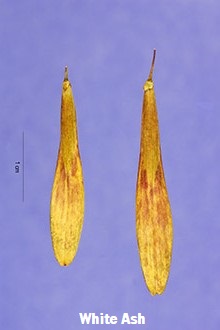
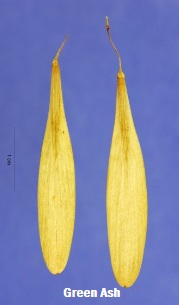
White Ash - (F. americana)
Fraxinus americana range:


TEXAS ASH (Fraxinus albicans syn F texensis syn F americana ssp texensis) is sometimes called Mountain Ash, and is a smaller drought hardy variety of White Ash. Texas Ash grows from 30-50' tall and 25-35' wide, with leaves 5-8 in. long typically with 5 leaflets (less often 7). Margins obscurely serrate or entire towards the base, length 1-3 in., width 3/4 to 2 in.; upper surface olive green to dark green and glabrous; lower surface paler and somewhat and glacous and glabrous, or with a few white hairs on the main vein. Samara 1/2 - 1 in. long. In the words of Benny Simpson, co-founder and former president of Texas native plants society and Texas A&M researcher, there isn't much difference between Texas ash and white ash. Leaves turn brilliant shades of orange, gold, purple or red in autumn. The state record Texas Ash is in Travis County, with a height of 65', circumference of 91" and spread of 69' for an index of 173.



Texas Ash - (Fraxinus albicans) click images to expand
Fraxinus albicans range:

GREEN ASH (Fraxinus pennsylvanica) A large tree typically growing 50-70' with pyramidal shape when young maturing to a more rounded but often somewhat irregular crown. Sometimes called River Ash it is often found in riparian zones along rivers and creeks, floodplain forests and even inundated swamps, but it is adaptable to and often found in other growing environments as well.
F pennsylvanica is a rather variable species and it can be hard to distinguish from F berlandieriana and F velutina, both of which may be considered southwestern varieties of F pennsylvanica. Widely differing sizes for leaves and leaflets of Green Ash are sometimes given, from 6-9 in. to 10-12 inches. It is generally accepted that the leaves of Green Ash are 8-12 in long, 5-9 leaflets, usually 7; oblong to lanceolate, acute or acuminate at apex, cuneate at base, leaflets irregularly serrate or entire, 3-5 in. long, 1-2 in. wide. Leaflets tapering at the base to a short, winged petiole, which distinguishes it from White Ash.
Green ash is so named because the color of its leaves is green on both the upper leaflet surfaces and the lower leaflet surfaces. Lateral leaflets gradually narrowed at base into a narrow wing that runs down the upper part of the leaflet stalk. It is extremely variable in twig and leaf pubescence. Samara 1-2 in. long. F. pennsylvanica has a narrower elongated seed with the wing extending into the seed cavity, but not all the way to the base. In comparison, F. americana has a noticeably thick seed, rounded, and the wing does not extend beyond the seed cavity. Winter buds are brown and the bud scars flat-topped, half circles. Leaves are medium to dark green and become yellow in fall. The state record Green Ash is in Caldwell County and is 64' tall with a circ. of 223" and spread of 99' size index 311.



Green Ash (Fraxinus pennsylvanica) - click images to expand
Fraxinus pennsylvanica range:
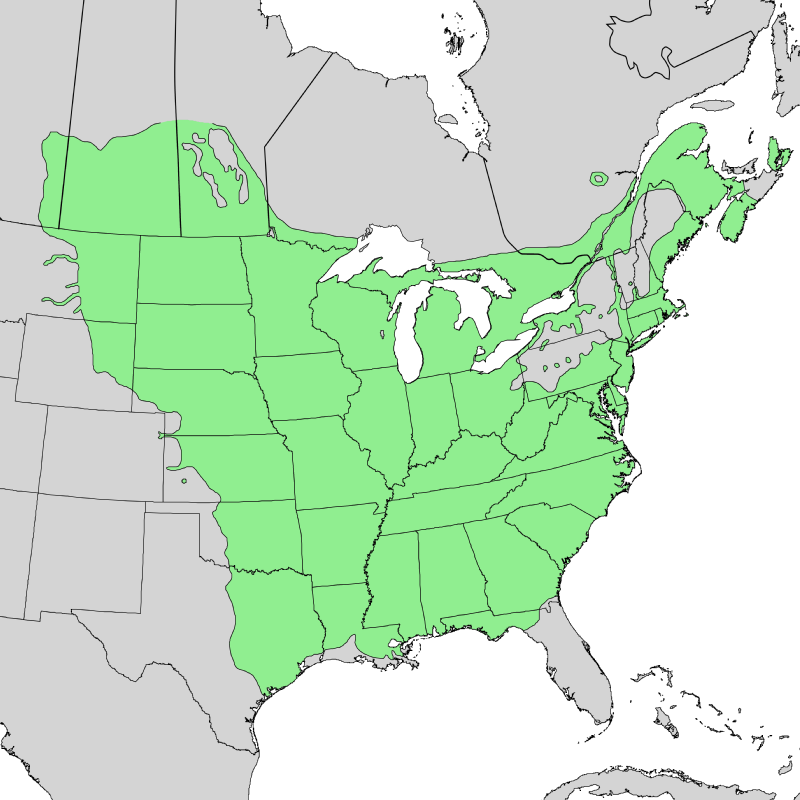

BERLANDIER ASH (Fraxinus berlandieriana) also known as Mexican Ash is a southwestern relative of F pennsylvanica. It is more similar to F Pennsylvanica than is F velutina and can be difficult to distinguish from F pennsylvanica, but is recognized as morphologically and geographically distinct. Intermediates occur where the two are sympatric. F Berlandieriana is found in moist canyons and stream banks in Central Texas to Trans-Pecos Texas; southward into Mexico where it is called Fresno or Plumero. Usually a small or medium sized round-topped tree less than 40' tall, but can grow to 55' with a 70'+ spread. There is some deal of variation in leaf and leaflet size, leaves ranging from 3-10 in. in length, predominately 3-5 leaflets, occasionally 7; lancelot or obovate 2-4 in. long, 1/2 - 1 1/2 in. wide, glabrous and green on top and below, or with a few axilliary hairs beneath, thickish, margin remotely serrate or entire. Samaras 1/2- 1 in. long, and notably, sometimes 3-winged helping to distinguish it from Green Ash. Leaves have fewer leaflets and smaller petiole bases than Green Ash with Berlandier Ash leaf scars less than 3mm and Green Ash more than 3mm. Leaflets more widely separated in relation to leaf size. Berlandier Ash is planted as an ornamental in south and west Texas and Mexico, sometimes under the misnomer Arizona Ash.
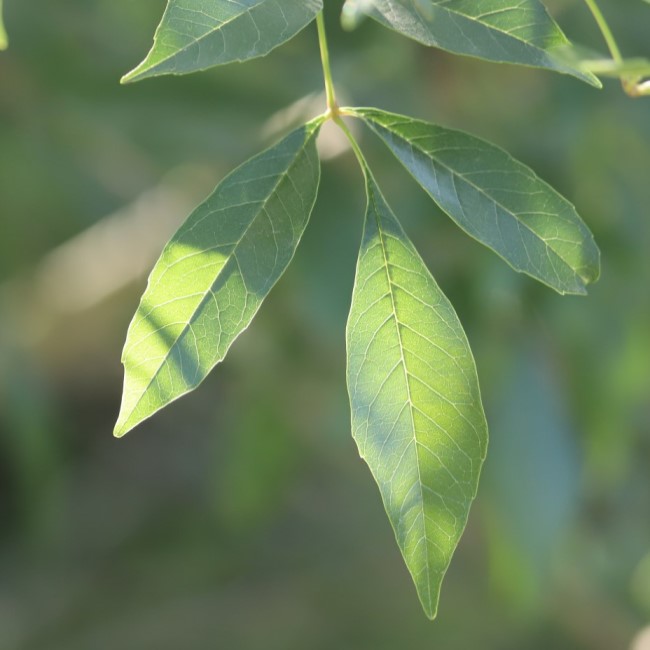
Berlandier Ash - (F. berlandieriana) Click on image to expand.
Fraxinus berlandieriana range

VELVET ASH (Fraxinus velutina syn F pennsylvanica ssp velutina) is native in Texas only in the far west but is often sold at nurseries. Fan-Tex ash are all male trees grown from F velutina cuttings and do not produce seeds. Marketed as being fast growing and drought resistant, but often problem prone and not recommended in most locations. However, the tree will thrive in less than ideal situations such as urban pollution and poor draining soil.
F velutina can reach 50' in height, with a 45-60' open crown in ideal conditions, but is usually half that size with spreading branches forming a rounded crown. Like F berlandieriana, F velutina is closely related to and believed to hybridize with F pennsylvanica. Some of these intermediate specimens may have been identified in the past as F berlandieriana. Since hybridization seems to occur, indicating a lack of sterility between these two ashes where they are in contact, some consider F velutina to be a western subspecies of F pennsylvanica. Like F Pennsylvanica, leaf and leaflet sizes vary, but F velutina has a generally accepted leaf size of 4-6 in. with 3-5 leaflets, rarely 7; 1-3 in. long and less than 2 in. wide. Leaves and leaflets typically being smaller and fewer than that of F pennsylvanica.
As the name Velvet Ash implies, the upside and underside of the leaf are often tomentose, however, it is variable in pubescence, with many plants having glabrous leaflets, especially on older foliage. margins semi-entire to serrate. Foliage turns yellow in autumn. Samara 1/2- 1 in. long. The state record is a tie between a tree in El Paso County which is 58' tall with a 146" circ. and 85' spread, and tree in Live Oak County that is 44' tall with a circ. of 164" and a 70' spread. Both have a size index of 225.

Velvet Ash - (F. velutina)
Fraxinus velutina range:

GREGG ASH (Fraxinus greggii) Trans-Pecos found on rocky hillsides and arroyo banks. Also called Little Leaf Ash, is usually shrubby, to 25'. Leaves persistant, 3/4 - 1 1/2 in. long, petioles winged. Leaflets usually 3, infrequently 5 or 7, sessile, thick, olive green above paler beneath, winged, 1/3 - 1 in. long 1/8 to 1/4 in. wide.

Gregg Ash - (Fraxinus greggii)
F. greggii range:
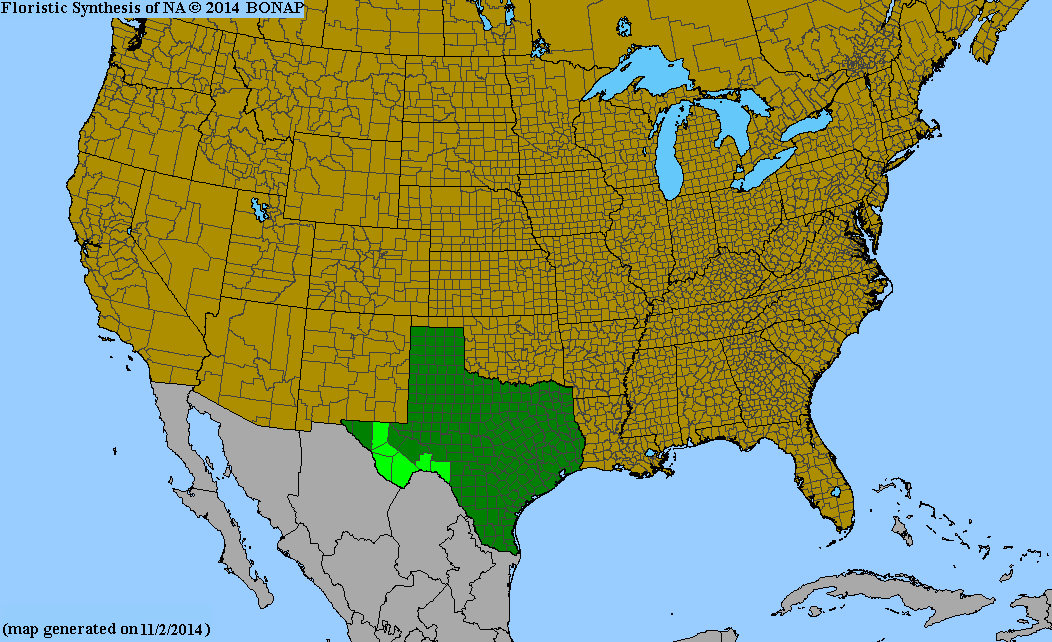
FRAGRANT ASH (Fraxinus cuspidata) is found in well drained soil in high altitudes in trans-pecos and in Mexico in rocky canyons. Shrubby, small tree to 25', sometimes forming thickets. Leaves 3 - 5 1/2 in. long. Leaflets 5-7, 1 1/2 - 2 1/4 in. long, up to 1 in. wide, remotely serrate, lancelot or narrowly ovate, dark green, glabrous above paler below. This ash is unique in having floral fragrance and petals.

Fragrant Ash - (F. cuspidata)
Fraxinus cuspidata range:

LINKS OF INTEREST:
Identifying ashes by leafyplace.com
Ash identification by jasonmtome.com
Distinguishing Fraxinus from utexas.edu
Fraxinus groups and commentary from phytoneuron.net
Fraxinus from bluegrasswoodland.com
Leaf key to Fraxinus and other trees from lsuagcenter.com
Fraxinus leaflets from utexas.edu
Fraxinus images from cotram.org
Fraxinus american from ufl.edu
Fraxinus amerciana from usfs
Fraxinus americana from usda.gov
Fraxinus Americana from carolinanature.com
Fraxinus americana from mushroomexpert.com
Fraxinus albicans from ctufc.org
Fraxinus albicans syn texensis from ufl.edu
Fraxinus albicans from dirtdoctor.com
Fraxinus albincans syns from itis.gov
Fraxinus albicans and pennsysvanica identification in Texas from utexas.edu
Fraxinus pennsylvanica from ufl.edu
Fraxinus pennsylvanica description from missouribotanicalgarden.org
Fraxinus pennsylvanica from vt.edu
Fraxinus pennsylvanica description frm ndsu.edu
Fraxinus pennsylvanica description frm iastate.edu
Fraxinus pennsylvanica from usfs.us
Fraxinus pennsylvanica from usda.gov
Fraxinus pennsylvanica var subintegerrima from treesandshrubs.com
Fraxinus berlandieriana from phytoneuron.net
Fraxinus berlandieriana from cotram.org
Fraxinus berlandieriana in the Valley from utexas.edu
Fraxinus berlandieriana sold as Arizona Ash by nativeplantproject.com
Fraxinus velutina from austintreeexperts.com
Fraxinus velutina description from tree-guide.com
Fraxinus velutina from ufl.edu
Fraxinus velutina from asu.edu
Emerald ash borer from icucn.org
Texas Big Tree Registry from tamu.edu
Benny Simpson bio tamu.edu
Benny Simpson TPW Texas Native Plants
Benny Simpson obit tamu.edu
This webpage is intended for nonprofit educational use only.
https://www.copyright.gov/title17/92chap1.html#107
I have no affiliation to any group, organization, or institution. Content is provided in good faith in regards to accuracy. Errors or misinformation may be present.
lanechaffin@gmail.com

HOME




























